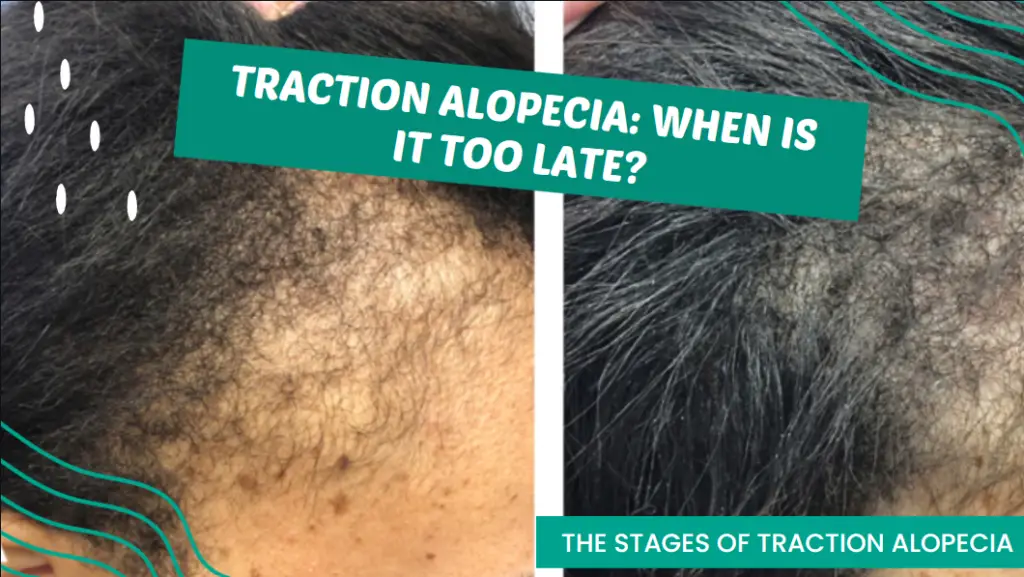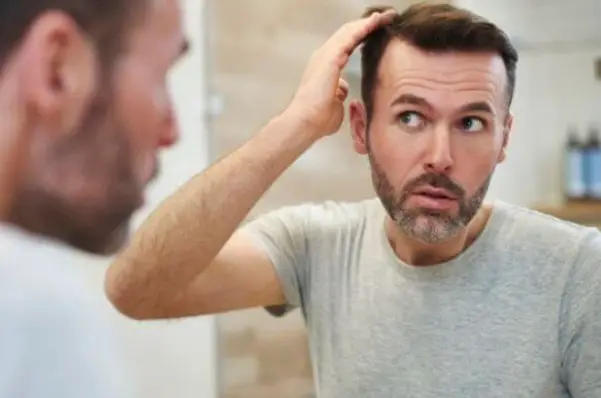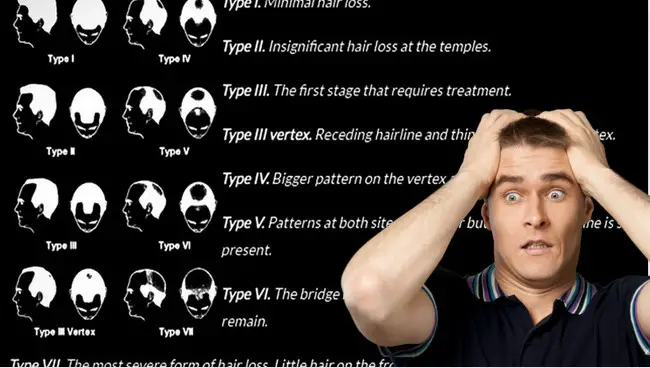Discover comprehensive insights on Late Stage Traction Alopecia, a form of hair loss caused by tension and pulling on the hair. Learn about its causes, prevention strategies, treatment options, and tips for living with this condition. Explore our resources and support available to help you navigate this journey.
Traction Alopecia (TA) is a form of hair loss that occurs when there’s continuous tension on the hair. It’s a condition that’s often overlooked until it has progressed to its later stages, making it crucial to understand and recognize the signs early on. In this article, we’ll delve deep into the world of Traction Alopecia, exploring its causes, stages, and treatment options, and providing you with the knowledge you need to prevent and manage this condition.
Hair is an integral part of our identity, and it’s no surprise that we go to great lengths to style it. However, certain hairstyles and hair styling practices can lead to TA. Tight buns, ponytails, braids, and the use of hair extensions can put a lot of stress on the hair follicles, leading to Traction Alopecia. It’s not just the hairstyles, but the frequency and the tightness of the styles that contribute to the risk.
If you’re interested in learning more about the relationship between certain hairstyles and TA, check out our article on Traction Alopecia and Trichotillomania. It provides a detailed look at how certain hair practices can lead to hair loss and what you can do to prevent it.
Genetics also play a role in TA. Some people may be more genetically predisposed to this type of hair loss than others. This makes it even more important to be aware of the signs and symptoms of TA, especially if there’s a family history of the condition.
In the next section, we’ll delve into the stages of Traction Alopecia, helping you understand how this condition progresses over time. Stay tuned to learn more about the early and late stages of TA, and how to recognize them.
For more information on the early signs of balding, don’t forget to read our article on Early Stages of Balding Crown. It’s a comprehensive guide that will help you understand the early signs of hair loss and what you can do to manage it.
Takeaways
Traction Alopecia is a form of hair loss caused by tension and pulling on the hair. It’s often associated with certain hairstyles and hair care practices, but with the right strategies, it can be prevented and managed.
Key takeaways from this article include:
- Traction Alopecia is caused by tension on the hair, often due to tight hairstyles or hair extensions. It’s important to avoid these hairstyles and to give your hair a break to prevent this condition.
- Treatment options for Traction Alopecia range from natural remedies to medications and surgical procedures. One common treatment is Minoxidil, a topical medication that can stimulate hair growth.
- Living with Traction Alopecia can be challenging, but there are strategies to manage it. This includes managing scarring, choosing the right hairstyles, and taking care of your mental health.
- Always seek professional advice if you’re concerned about hair loss. A healthcare professional can provide guidance and treatment options based on your individual needs.
Remember, knowledge is power. The more you know about Traction Alopecia, the better equipped you’ll be to prevent and manage it. So, let’s continue our journey into understanding this condition.
What is Traction Alopecia?
Traction Alopecia is a form of hair loss that’s caused by tension and pulling on the hair over a prolonged period. It’s a condition that’s often associated with certain hairstyles and hairstyling practices. While it can affect anyone, it’s more common in women, particularly those of African descent who wear various forms of traumatic hairstyling for a long time.
The main cause of Traction Alopecia is the stress exerted on the hair follicles due to tight hairstyles. These can include ponytails, braids, buns, and the use of hair extensions. The tension on the hair follicles can lead to inflammation and, eventually, hair loss.
Here are some hairstyles and practices that can lead to TA:
- Tight ponytails or buns
- Braids or cornrows
- Hair extensions or weaves
- Hair straightening or relaxing treatments
If you’re interested in learning more about how certain hairstyles can lead to TA, check out our article on traction alopecia hair extensions. It provides a detailed look at how certain hair practices can lead to hair loss and what you can do to prevent it.
Genetics also play a role in Traction Alopecia. Some people may be more genetically predisposed to this type of hair loss than others. This makes it even more important to be aware of the signs and symptoms of TA, especially if there’s a family history of the condition.
In the next section, we’ll delve into the stages of Traction Alopecia, helping you understand how this condition progresses over time. Stay tuned to learn more about the early and late stages of TA, and how to recognize them.
Stages of Traction Alopecia
Traction Alopecia progresses through several stages, from early signs to irreversible hair loss. Understanding these stages can help you identify the condition early and take steps to prevent further damage.
Early Stage Traction Alopecia
In the early stages of Traction Alopecia, you might notice redness, itching, and small bumps around the hairline or at the site of the tension. The hair may start to recede, particularly around the forehead and temples. This stage is often reversible if the tension on the hair is relieved.
Here are some signs of early stage TA:
- Redness or inflammation on the scalp
- Itching or discomfort in the affected area
- Small bumps or pimples on the scalp
- Receding hairline, particularly around the forehead and temples
If you notice these signs, it’s crucial to take action immediately. This could involve changing your hairstyle, avoiding hair extensions, or seeking advice from a hair care professional. For more information on the early signs of balding, check out our article on Early Stages of Balding Crown.
Late Stage Traction Alopecia
In the late stages of Traction Alopecia, the hair loss becomes more noticeable and may become permanent. The hair follicles are damaged to the point where they can no longer produce hair, leading to bald patches. This stage is characterized by irreversible scarring and significant hair loss.
Here are some signs of late stage TA:
- Significant hair loss in the areas where there has been tension
- Bald patches or thinning hair
- Scarring on the scalp
At this stage, treatment options are more limited and may involve medications or surgical procedures. For more information on treatment options, check out our article on Stages of Balding Treatment.
Remember, Traction Alopecia is preventable and, in many cases, reversible if caught early. The key is to pay attention to the signs and take action as soon as you notice any changes.
In the next section, we’ll discuss how to prevent Traction Alopecia and what you can do to protect your hair. Stay tuned for practical tips and advice on maintaining healthy hair and preventing hair loss.
For more insights on hair loss and balding, don’t forget to read our article on Will I Go Bald If My Hair Keeps Falling Out?. It’s a comprehensive guide that will help you understand the causes of hair loss and what you can do to manage it.
Prevention of Traction Alopecia
Preventing Traction Alopecia is all about taking care of your hair and being aware of the risks associated with certain hairstyles and hair care practices. Here are some steps you can take to prevent TA:
Change Your Hairstyle
The first step in preventing Traction Alopecia is to change your hairstyle. Avoid hairstyles that pull on your hair, such as tight ponytails, buns, braids, and hair extensions. Opt for loose hairstyles that don’t put tension on your hair follicles.
Take Breaks
If you do wear hairstyles that pull on your hair, it’s important to take breaks. Don’t wear these hairstyles all the time, and give your hair a break in between. This can help to relieve the tension on your hair follicles and prevent damage.
Use Gentle Hair Care Products
Some hair care products can cause damage to your hair and scalp. Opt for gentle, natural products that nourish your hair without causing harm. Avoid products that contain harsh chemicals.
Seek Professional Advice
If you’re concerned about hair loss or if you’re noticing the early signs of Traction Alopecia, it’s a good idea to seek professional advice. A hair care professional or a dermatologist can provide guidance and treatment options.
Remember, Traction Alopecia is preventable. By being aware of the risks and taking steps to protect your hair, you can prevent this form of hair loss.
In the next section, we’ll discuss the treatment options for Traction Alopecia. Whether you’re in the early stages of TA or dealing with significant hair loss, there are treatments available that can help. Stay tuned to learn more about these treatment options and how they can help you manage Traction Alopecia.
Treatment Options for Traction Alopecia
If you’re dealing with Traction Alopecia, it’s important to know that there are several treatment options available. These range from natural remedies to medications and surgical procedures. Let’s explore these options in more detail.
Natural Remedies for Traction Alopecia
Natural remedies can be a good first step in treating Traction Alopecia. This can include:
- Scalp massages to increase blood flow to the hair follicles
- Essential oils like peppermint and rosemary that can stimulate hair growth
- A healthy diet rich in vitamins and minerals that support hair health
Remember, while these remedies can help, they’re often most effective in the early stages of Traction Alopecia. If you’re dealing with significant hair loss, it’s important to seek professional advice.
Medications for Traction Alopecia
There are several medications that can help treat Traction Alopecia. One of the most common is Minoxidil, a topical medication that’s applied to the scalp. Minoxidil can stimulate hair growth and is often used in the treatment of various forms of hair loss.
However, it’s important to be aware of the potential side effects of Minoxidil, which can include scalp irritation and unwanted hair growth in other areas. For more information on Minoxidil and its side effects, check out our article on Minoxidil Itchy Scalp.
Surgical Procedures for Traction Alopecia
In more severe cases of Traction Alopecia, surgical procedures may be considered. This can include hair transplant surgery, where hair follicles are taken from one part of the scalp and transplanted to the affected areas.
Hair transplant surgery can be an effective treatment for Traction Alopecia, but it’s a significant decision that should be made in consultation with a healthcare professional. For more information on hair transplant surgery, check out our article on Traction Alopecia Hair Transplant.
Remember, the best treatment for Traction Alopecia depends on the individual and the severity of their condition. It’s always best to seek professional advice before starting any new treatment.
In the next section, we’ll discuss how to live with Traction Alopecia. From managing irreversible scarring to finding hairstyles that work for you, we’ll provide practical tips and advice to help you navigate this condition.
For more insights on hair loss and balding, don’t forget to read our article on Iron Deficiency Hair Loss Early Stage Female Pattern Baldness. It’s a comprehensive guide that will help you understand how hair extensions can contribute to Traction Alopecia and what you can do to prevent it.
Living with Traction Alopecia
Living with Traction Alopecia can be challenging, but with the right strategies and support, it’s possible to manage this condition and maintain a positive quality of life. Here are some tips for living with TA:
Managing Irreversible Scarring from Traction Alopecia
One of the challenges of late-stage Traction Alopecia is dealing with irreversible scarring. This can be a difficult reality to face, but there are ways to manage it:
- Consider hairstyles that can help cover the affected areas. This can include using accessories like scarves or hats, or trying different hairstyles that can help conceal the hair loss.
- Seek professional advice. A dermatologist or a hair care professional can provide guidance and treatment options for managing scarring.
- Practice self-care. It’s important to take care of your mental health as well as your physical health. Consider seeking support from a counselor or a support group.
For more information on managing hair loss, check out our article on How to Stop Hair Shedding Immediately.
Hairstyles for Individuals with Traction Alopecia
Choosing the right hairstyle can make a big difference when living with Traction Alopecia. Here are some tips:
- Opt for loose hairstyles that don’t put tension on the hair follicles.
- Avoid hairstyles that pull on the hair, such as tight ponytails, buns, braids, and hair extensions.
- Consider short hairstyles that can help reduce the weight and tension on the hair follicles.
Emotional and Psychological Aspects of Living with Traction Alopecia
Living with Traction Alopecia can also have emotional and psychological impacts. It’s important to seek support and take care of your mental health. Here are some strategies:
- Seek support from friends and family. Sharing your experiences and feelings with loved ones can provide emotional support.
- Consider joining a support group. Connecting with others who are going through similar experiences can provide comfort and practical advice.
- Seek professional help. If you’re struggling with feelings of anxiety or depression, consider seeking help from a mental health professional.
Remember, living with Traction Alopecia can be challenging, but you’re not alone. There are resources and support available to help you navigate this journey.
In the next section, we’ll answer some frequently asked questions about Traction Alopecia. From understanding the causes to exploring treatment options, we’ll provide answers to some of the most common queries about this condition.
For more insights on hair loss and balding, don’t forget to read our article on Receding Hairline Stages. It’s a comprehensive guide that will help you understand the stages of hair loss and what you can do to manage it.
Frequently Asked Questions about Traction Alopecia
Traction Alopecia is a complex condition, and it’s natural to have questions about it. Here, we’ll answer some of the most frequently asked questions about TA.
1. What causes Traction Alopecia?
Traction Alopecia is caused by tension and pulling on the hair over a prolonged period. This can be due to tight hairstyles like ponytails, buns, braids, or the use of hair extensions. For more information on the causes of TA, check out our article on male and female pattern balding and How to Stop Alopecia Areata From Spreading.
2. Can Traction Alopecia be reversed?
In the early stages, Traction Alopecia can often be reversed by relieving the tension on the hair and allowing the hair follicles to recover. However, in the later stages, the damage to the hair follicles may be permanent.
3. What are the treatment options for Traction Alopecia?
Treatment options for Traction Alopecia range from natural remedies to medications and surgical procedures. This can include scalp massages, essential oils, a healthy diet, medications like Minoxidil, and hair transplant surgery. For more information on treatment options, check out our article on Stages of Balding Treatment.
4. How can I prevent Traction Alopecia?
Preventing Traction Alopecia involves avoiding hairstyles that put tension on the hair, taking breaks from these hairstyles, using gentle hair care products, and seeking professional advice if you notice signs of hair loss. For more tips on preventing hair loss, read our article on Will I Go Bald If My Hair Keeps Falling Out?.
5. Can men get Traction Alopecia?
While Traction Alopecia is more common in women, men can also get this condition. It’s often associated with certain hairstyles or practices that pull on the hair, which can be common in both men and women.
Remember, if you have any concerns about hair loss or Traction Alopecia, it’s always best to seek professional advice. A healthcare professional can provide guidance and treatment options based on your individual needs.
In the next section, we’ll wrap up our discussion on Traction Alopecia. We’ll provide a summary of the key points from this article, helping you understand this condition and how to manage it.
For more insights on hair loss and balding, don’t forget to read our article on Male Pattern Baldness Stages. It’s a comprehensive guide that will help you understand the stages of male pattern baldness and what you can do to manage it.
Conclusion
Traction Alopecia is a form of hair loss that’s caused by tension and pulling on the hair. While it can be a challenging condition to live with, there are steps you can take to prevent and manage it.
The key to preventing Traction Alopecia is to avoid hairstyles that put tension on the hair. This includes tight ponytails, buns, braids, and the use of hair extensions. It’s also important to take breaks from these hairstyles and to use gentle hair care products.
If you’re dealing with Traction Alopecia, there are several treatment options available. This can range from natural remedies like scalp massages and essential oils, to medications like Minoxidil, and even surgical procedures like hair transplant surgery.
Living with Traction Alopecia can be challenging, but with the right strategies and support, it’s possible to manage this condition and maintain a positive quality of life. This includes managing irreversible scarring, choosing the right hairstyles, and taking care of your mental health.
Remember, if you have any concerns about hair loss or Traction Alopecia, it’s always best to seek professional advice. A healthcare professional can provide guidance and treatment options based on your individual needs.
We hope this article has provided you with a comprehensive understanding of Traction Alopecia, from its causes and stages, to prevention strategies and treatment options. For more insights on hair loss and balding, don’t forget to explore our other articles on Stages of Balding.
Remember, you’re not alone in this journey. There are resources and support available to help you navigate this condition. Stay informed, seek help when needed, and take care of your hair and your overall health.
- AI Powered Bald Filter Online 2024: See Yourself with No Hair! - January 19, 2024
- Harklinikken Bad Reviews 2024: Analyzing Negative Feedbacks - January 18, 2024
- How to Get the Alex Eubank Hair | Step-By-Step Tutorial 2024 - January 18, 2024







